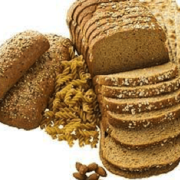Current Price Of Corn (maize)
-
Recently Browsing 0 members
- No registered users viewing this page.
-
Topics
-
-
Popular Contributors
-
-
Latest posts...
-
164
-
52
Pride group founder jailed for rape of boy,12
Link please, stop waffling, stop guessing, and are you a Brit........?....🤭 -
10
BKK Bank 4 months banked method??
and someone up in Chiang Rai had to sign this form -
-
164
BBC in Trouble again.
I wouldn't be sad to see the ineffectual Shah go, especially as it would allow Labour to appoint his replacement. I just don't think the 'crime' merits it, as it was an operational decision to not cut the broadcast. But yes, the Ofcom report will be important. -
0
Getting money in VN
I'm flying BKK to Danang in August for a 2-week hol with tirak. I do not have any USD or VND with me. I do have several hundred dollars in AUD cash which I take with me, plus my Australian ATM card, and obviously I have THB. It's been a long time since I last went to VN so I forget how I got money last time. I presume I can use my Aussie ATM card in ATMs in Danang to get VND? If so what are the daily limits? Also is any particular bank better than others. I'd rather not bring a bunch of THB cash with me, it would suit me better to take money out of my CBA bank acc in Australia. Any tips for me?
-
-
Popular in The Pub







.thumb.jpeg.d2d19a66404642fd9ff62d6262fd153e.jpeg)


.thumb.jpg.4fd22303fa94eb0a6ebf5a9cf7194eb4.jpg)




Recommended Posts
Create an account or sign in to comment
You need to be a member in order to leave a comment
Create an account
Sign up for a new account in our community. It's easy!
Register a new accountSign in
Already have an account? Sign in here.
Sign In Now